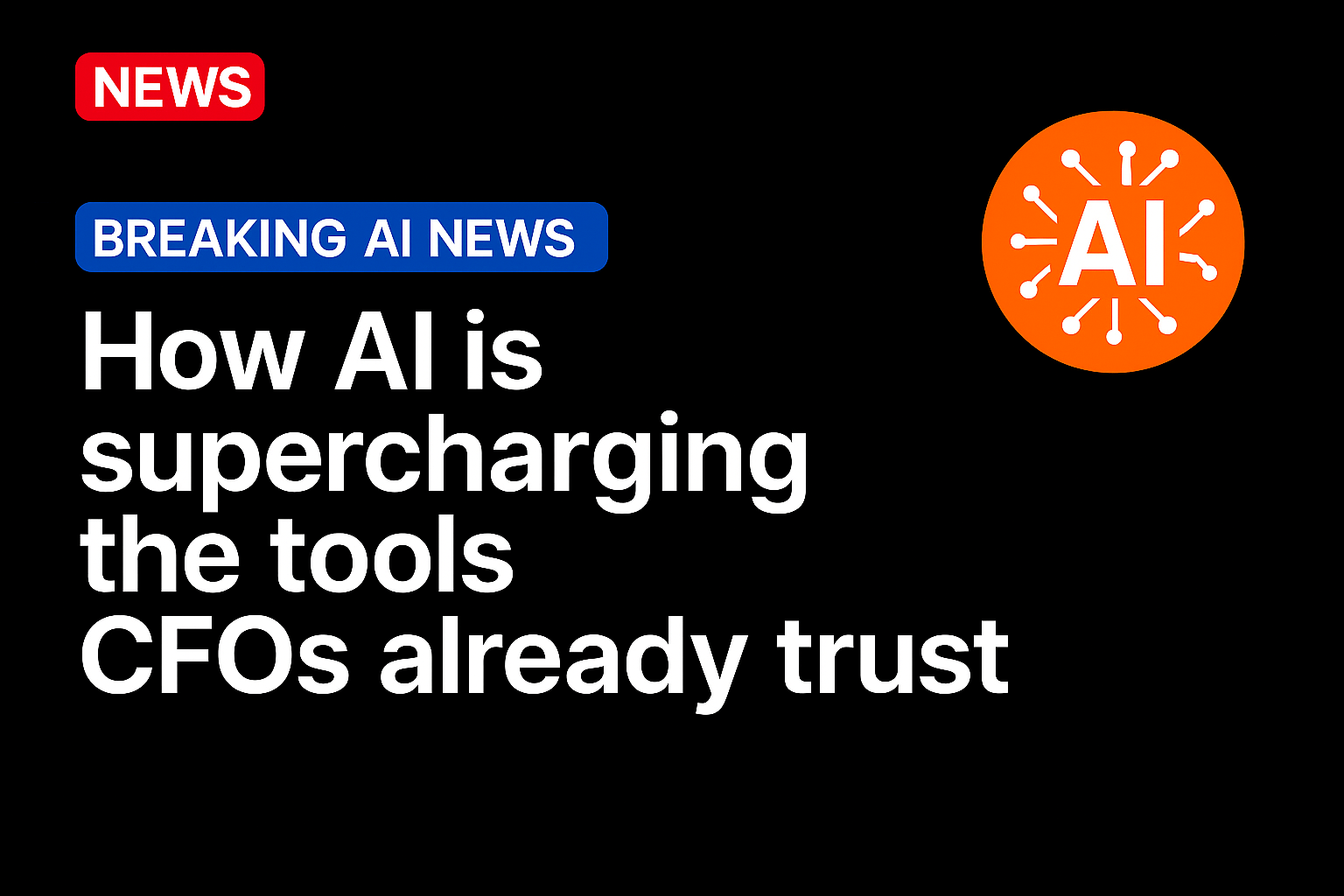When market leaders speak, CFOs and treasury teams tend to listen.
And when on Tuesday (Oct. 14), Goldman Sachs used its third‑quarter earnings announcement to unveil a more centralized operating model built around artificial intelligence (AI), forward-thinking finance teams were already nodding their heads.
After all, finance teams are no stranger to innovation. Not only do they have to approve most investments into it, but software technologies like machine learning and process automation are often battle tested in the corporate back office.
For many enterprise departments, the rise of AI for finance is less a rip-and-replace exercise than a new architecture built atop decades of data, standardized processes, and regulatory discipline. The very nature of the corporate finance function creates fertile ground for responsible automation.
By pairing generative reasoning with the predictability of established systems, finance functions are finding an AI “sweet spot” in domains they already understand deeply, like forecasting and planning, reconciliations, working capital optimization, risk management and payments.
This can ultimately help shift the entire office of the CFO from mechanical data preparation to interpretive analysis.
CFOs Bet on Intelligence, Not Reinvention
In many ways, finance leaders are uniquely suited to this moment. Their skepticism toward hype has become an asset. While other functions race to deploy chatbots and content generators, CFOs must remain focused on measurable, auditable gains.
The latest PYMNTS Intelligence report, “From Experiment to Imperative: U.S. Product Leaders Bet on Gen AI,” captures this pivot well. Eighty-seven percent of product leaders now expect AI to improve fraud detection, 85% forecast better regulatory compliance, and 83% anticipate stronger data security.
“There’s a continuous evolution and … dynamic disruption in finance that requires CFOs to harness data and AI to make finance more efficient, more effective and substantially more strategic,” Raj Seshadri, chief commercial payments officer at Mastercard, told PYMNTS during a discussion for the B2B PYMNTS 2025 event, “B2B.AI: The Architecture of Intelligent Money Movement.”
Rather than reinventing financial management, AI is refining it. Forecasting models still rely on regression analysis, but they can now articulate their logic. Reconciliation engines still match ledgers, but they can now reason about exceptions. Working capital algorithms still balance liquidity, but they can now offer greater explainability.
Across all these use cases, a common architecture is emerging: legacy finance systems at the core, analytical engines in the middle, and generative AI as the cognitive layer on top. The cognitive layer doesn’t change how data is processed—it changes how humans interact with it.
“Modernization works best when you take out the biggest bottleneck, and the biggest bottleneck is the labor today,” Finexio CEO Ernest Rolfson told PYMNTS in an interview. “It’s the manual entry, the fragmented workflows.”
Embracing AI as a Cognitive Layer
Finance tech stacks are notoriously complex, spanning ERP systems, data warehouses, planning tools and regulatory software. Retrofitting generative AI into this ecosystem is far easier than rebuilding it.
The ultimate goal isn’t just to automate workflows but to elevate decision-making. AI-enhanced forecasting informs strategy; explainable reconciliations improve audit readiness; narrative anomaly detection strengthens fraud prevention.
“AI gives [CFOs] cash flow management in a really active sense — real-time visibility, actively spotting trends and risks as they happen,” Eric Frankovic, president of Corporate Payments at WEX, told PYMNTS.
“All of these things were available always,” Frankovic emphasized separately, “but what AI does is it gives the real-time ability to coordinate all of them into one message, then make decisions off those real-time messages.”
The PYMNTS Intelligence report “From Bottleneck to Breakthrough: AP Transformation in 2025,” created in collaboration with Finexio, found that AI-powered targeting can achieve 90% accuracy in predicting supplier adoption of digital payment methods.
Companies are asking not “Should we try this?” but “How will this improve cash flow, forecasting accuracy, or decision speed?” Emanuel Pleitez, head of finance at Finix, told PYMNTS in an interview posted Oct. 8.
“If you just start using AI today without needing to make the big five, 10% of your budget investment into it, you can actually extract and get five to up to 20% more productivity gains,” added Pleitez.
Source: https://www.pymnts.com/




